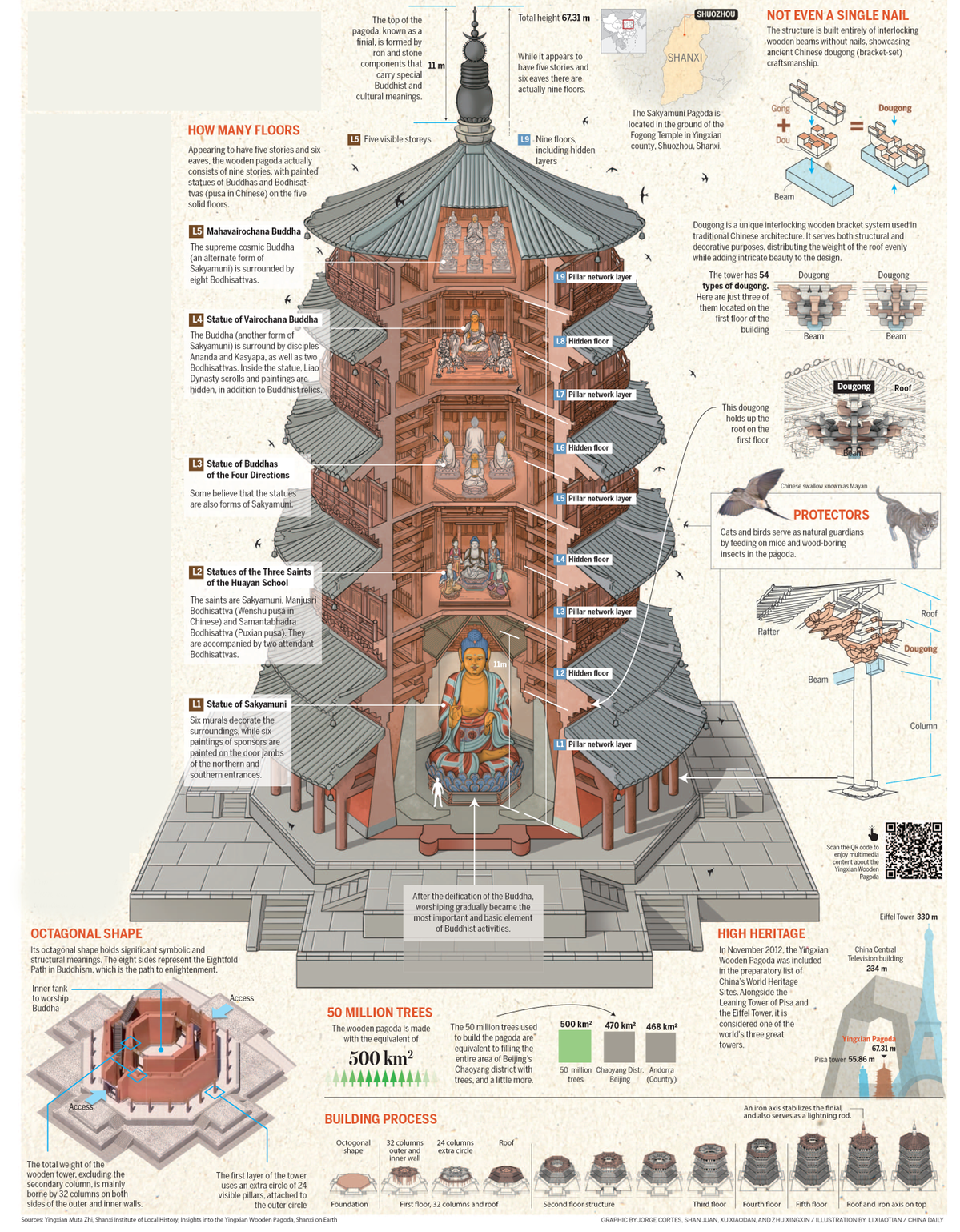Wooden pagoda stands test of time
Nailless, 67-meter-tall tower bears witness to cultural resilience over centuries, as Xu Xiaodan, Shan Juan and Zhu Xingxin report from Yingxian, Shanxi

Editor's Note: Using a blend of words and visuals, this series explores unique communities and reveals the heart of China through food, architecture, craftsmanship, landscapes and traditions.


The architectural marvel that is the Yingxian Wooden Pagoda in the city of Shuozhou, Shanxi province, claims the title of the world's tallest and oldest wooden structure, standing shoulder to shoulder with global landmarks like Italy's Leaning Tower of Pisa and the Eiffel Tower in Paris.
Built in 1056 during the Liao Dynasty (916-1125), the pagoda, also known as the Sakyamuni Pagoda, is located in the grounds of the Fogong Temple in Yingxian county. It stands 67.31 meters tall with a base diameter of 30.27 meters, and weighs more than 7,400 metric tons. While it appears to have five stories and six eaves, it actually contains nine layers — five visible and four hidden.
On each story, there are two circles of wooden pillars to support the upper story: 24 at the outer circle and eight at the inner circle.
The most impressive aspect of the pagoda's construction is that no iron nail was used. All connections were completed through the Chinese mortise and tenon joint structure, which can bear large loads and allows for certain deformation. Some 54 types of dougong (interlocking wooden brackets) were used to connect various pillars and crossbeams. Over the past centuries, the pagoda has survived numerous earthquakes and even artillery attacks during conflicts in the 1920s.
The tower is a typical example of Buddhist architecture with ceremonial sites constructed along the vertical space, which shows the prosperity and creativity of Buddhist architecture in the Liao Dynasty. It bears witness to how the nomadic Khitan were deeply affected by Han farming culture after they passed the Great Wall southward and established the Liao Dynasty, and vigorously promoted cultural integration by developing Buddhism.
Objects originally within the pagoda include two tooth relics of Sakyamuni, the 11-meter-high Sakyamuni statue sitting under a delicate caisson ceiling on the first floor, statues of Buddha and Bodhisattva from the second to the fifth floors, and historical plaques inscribed by notable figures from different dynasties.
Migratory birds serve as natural guardians by feeding on wood-boring insects, whose twittering presence adds lively charm to the time-honored pagoda.
Contact the writers at shanjuan@chinadaily.com.cn























